Number Sense Teaching Resources
Browse printable number sense worksheets, hands-on maths activities and more teacher resources created by teachers for teachers like you!
These resources are aligned with the Australian Maths Curriculum, and each was created by teachers with teachers — and students — in mind to help build foundational maths skills in ways that engage and excite students about numbers!
Want to learn more about number sense? Read on for a primer from our teacher team, including a definition of number sense, how to assess this important maths skill and more!
What Is Number Sense?
In the most basic sense (no pun intended), number sense refers to a student's intuitive understanding of numbers and their relationships. It includes the ability to estimate and compare quantities, understand numerical patterns and relationships and make reasonable judgments about the accuracy of calculations.
When students show an understanding of numbers, their size, relationships,and how they are affected by the four mathematical operations, what they're really showing is their number sense.
In an educational setting, building number sense is closely related to other foundational skills such as problem-solving, critical thinking and logical reasoning. As our students get older, it will become a crucial skill for daily life they will use to manage finances, calculate time and make decisions based on numerical information.
Teach Starter Teacher Tip: Although the names may seem interchangeable, it's worth noting that number sense is not the same as mathematical fluency or memorisation of algorithms, but rather a deep understanding of the underlying concepts and relationships between numbers.
When Does Number Sense Develop?
There is no single year level when we're teaching students number sense — instead, it continues to develop and become more sophisticated as students progress through primary school.
Research suggests that babies as young as 6 months old can distinguish between small and large numbers of objects, and by prep, students are already working on number sense as they begin to learn counting and one-to-one correspondence. At this level, they're also beginning to develop an understanding of quantity and relative size — both key to overall number sense.
Number sense will continue to grow in primary school as students become more adept at recognising and using numbers to solve problems, and it continues into high school and — for many students — into university.
Assessing Number Sense
When we assess students for their number sense skills, there are certain mathematical concepts that they should have under their belts. These include:
- Ability to Recognise Missing Numbers in a Pattern —When kids can fill in missing numbers in a sequence, they're showing that they can make connections between numbers and develop an understanding of the relationships between them.
- Ability to Use Maths Mentals — Students with number sense can use maths mentals to solve problems involving the four basic operations.
- Ability to Engage in Systematic Counting — Children who can count systematically can more easily understand the relationships between numbers, including number magnitude, patterns and sequences.
- Ability to Subitise Numbers — Students can use visual clustering skills to instantly recognise how many objects are in a group without physically counting them.
- Ability to Relate Numbers to Real-World Problems —For example, a student may understand that '3' means 'three objects' or 'three days' or 'three dollars.'
- Ability to Compose and Decompose Numbers — Students use number sense when they break down numbers and put them back together. For example, a student who can break down the number 10 into 8 and 2, then add the two back together to again make 10, is using number sense.
- Plus Plan
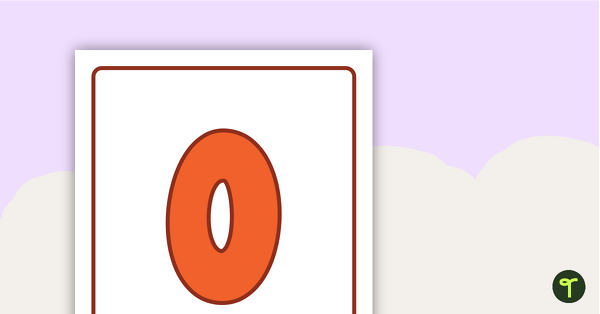
Number and Word Posters 0-99
Posters showing numbers and words from 0-99.
- Plus Plan
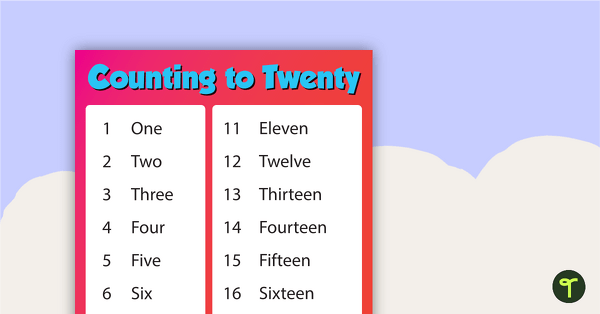
Counting to Twenty Poster - Colour
A poster showing numbers and words from one to twenty.
- Plus Plan

Maths Activity Ideas for Parents - Place Value
An information sheet for parents or carers to use when assisting children with place value at home.
- Plus Plan
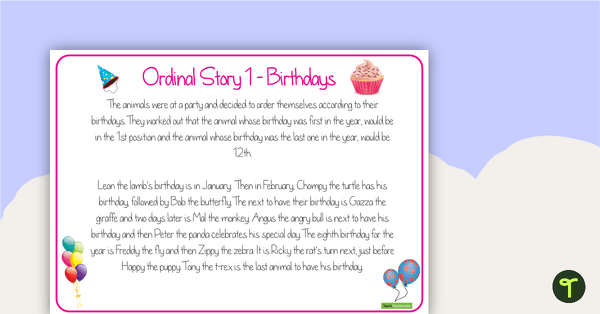
Ordinal Stories
A game that incorporates reading and ordinal number skills.
- Plus Plan
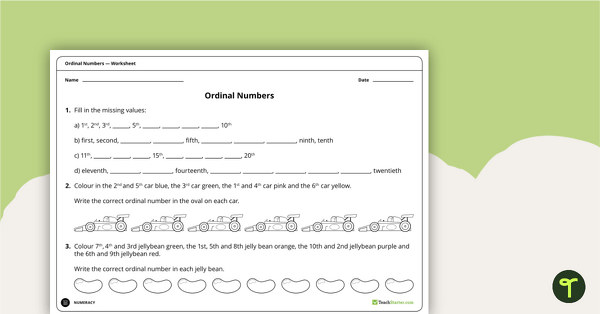
Ordinal Numbers Worksheet
A worksheet to help students consolidate their understanding of ordinal numbers.
- Plus Plan
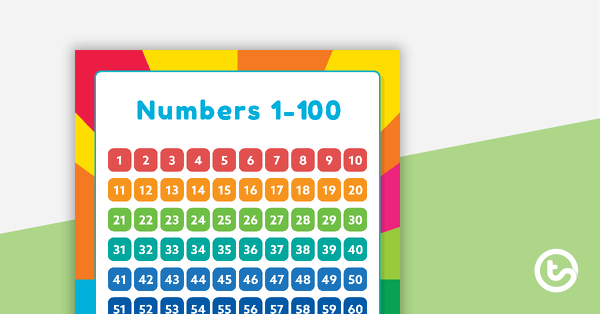
Rainbow Starburst - Numbers 1 to 100 Chart
A rainbow starbursts themed hundreds board.
- Plus Plan

Friends of 30 Dominoes
A set of dominoes to use in the classroom when matching friends of 30.
- Plus Plan
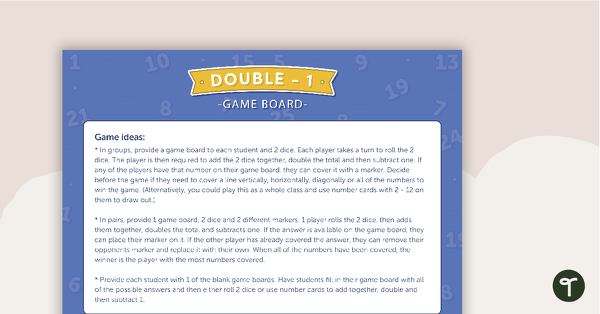
Double Minus 1 – Game Boards
30 game boards to use when working with near doubles.
- Plus Plan
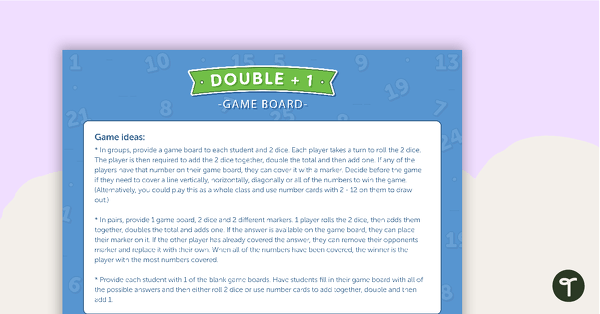
Double Plus 1 – Game Boards
30 game boards to use when working with near doubles.
- Plus Plan
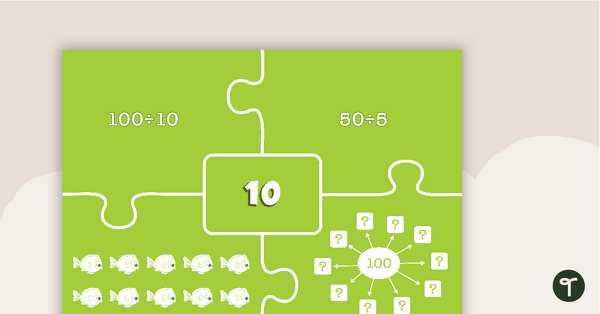
Number Matching Puzzle - Division
A hands-on game to play when learning about dividing numbers.
- Plus Plan

Numbers 0-9 with Animal Values
Posters representing the numbers from 0-9 with different animals showing their values.
- Plus Plan
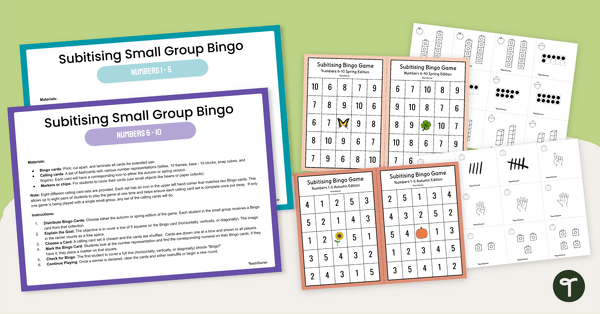
Subitising Bingo Games (Numbers 1 - 10)
Play these subitising bingo games in your guided groups to give your students practise subitising numbers up to 10.
- Plus Plan
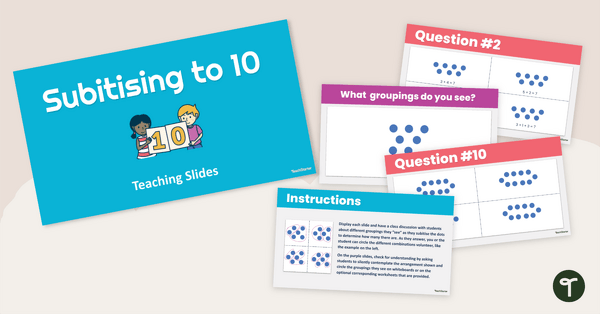
Subitising to 10 Teaching Slides
Display our Subitising to 10 Teaching Slides to encourage mathematical discussions in your classroom.
- Plus Plan
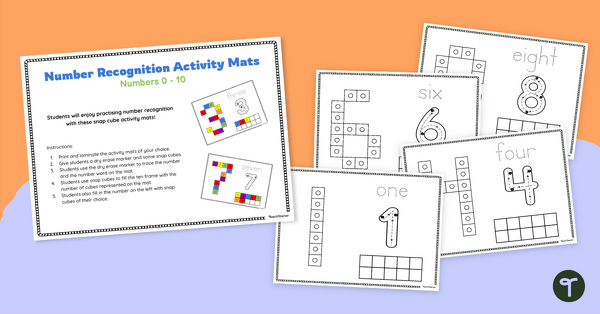
Number Recognition Activity Mats (Numbers 0 - 10)
Use these Number Recognition Activity Mats to give your students hands-on practise building and writing the numbers 0 - 10.
- Plus Plan
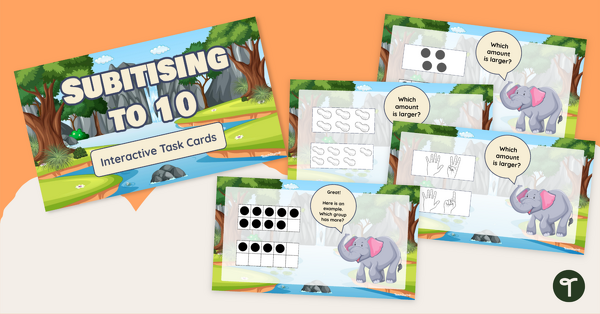
Subitising to 10 Interactive Task Cards
Practise subitising to 10 with these varied and engaging interactive task cards.
- Plus Plan
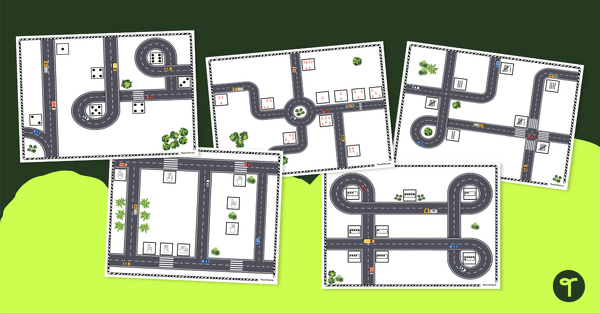
Subitising “Construct-a-City” Activity
Utilise this hands-on subitising activity to help your students learn to subitise to 5 and beyond.
- Plus Plan
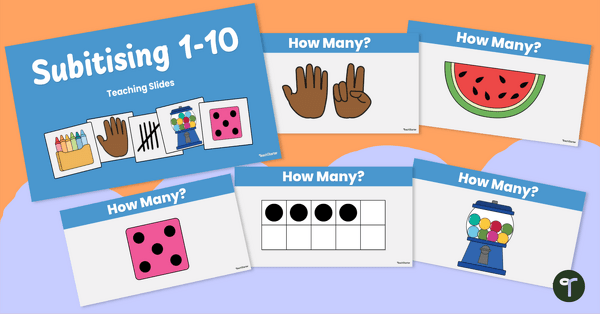
Virtual Subitising Card Deck
Display these virtual subitising cards to teach your students to instantly recognise quantities.
- Plus Plan
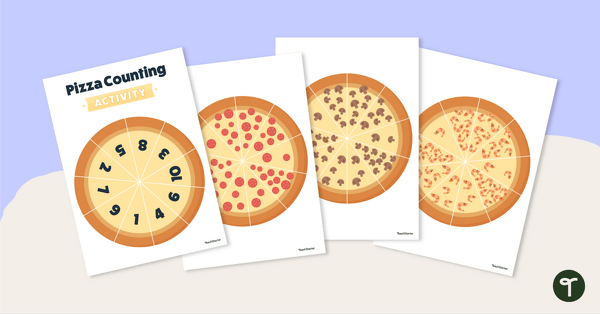
Make a Pizza Counting Game
Use this pizza-themed counting game to get your students matching numerals with their corresponding quantities.
- Plus Plan
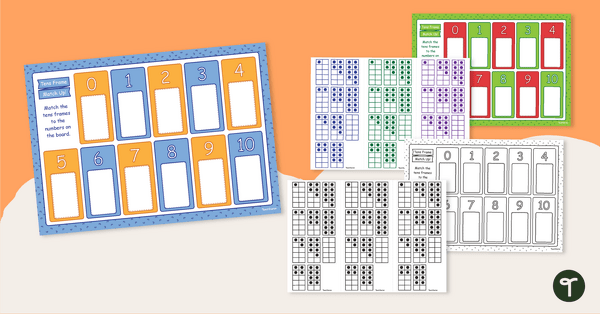
Ten Frame Matching Game
Use this ten frame game to strengthen your students’ number sense and foundational maths skills.
- Plus Plan
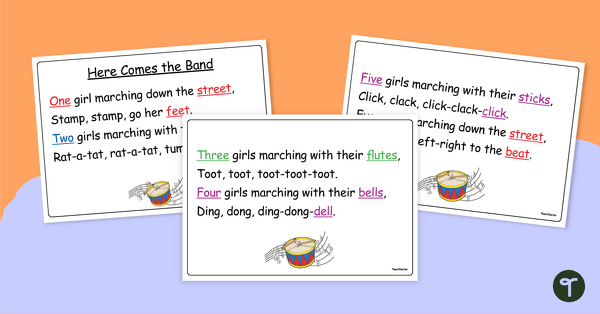
Here Comes the Band – Counting Rhyme Poster
Use the counting nursery rhyme “Here Comes the Band” poster to teach your students about numbers and rhyme simultaneously!
- Plus Plan
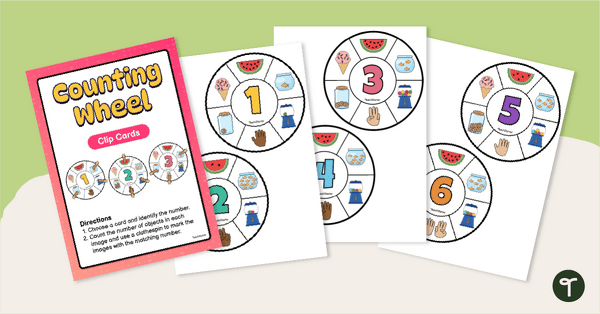
Counting Wheel Clip Cards Numbers 1-10
Practise counting objects to 10 and using fine motor skills to put a peg on these clip cards.
- Plus Plan

Counting to 20 I Have, Who Has? Card Game
Show student knowledge of counting to 20 with this fun I Have, Who Has? Counting Card Game.
- Plus Plan
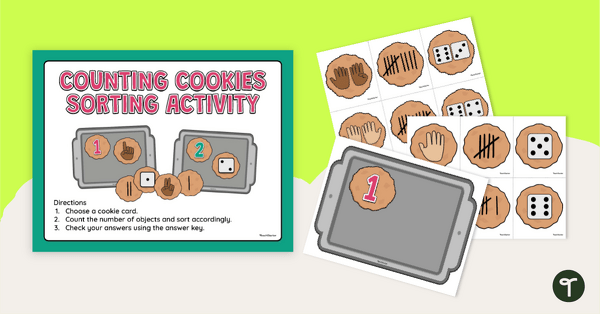
Counting Cookies Sorting Activity
Practise counting to 10 with various representations with this cookie sorting activity.
- Plus Plan
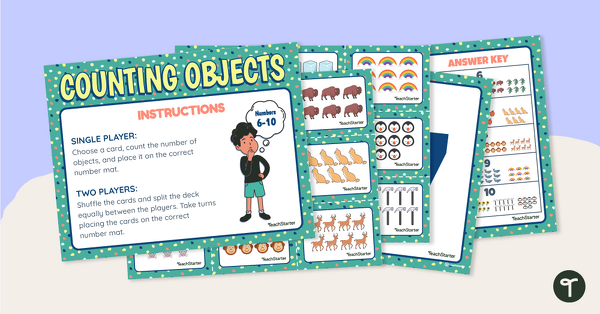
Counting Objects Sorting Numbers 6-10
Practise counting 6 – 10 objects with this colourful sorting activity.
- Plus Plan
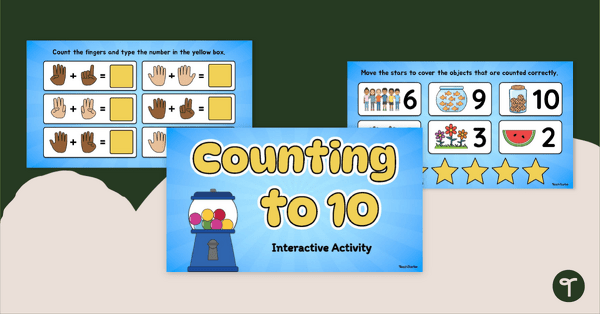
Counting to 10 Interactive Activity
Practise counting to 10 with this fun and engaging interactive activity.
- Plus Plan
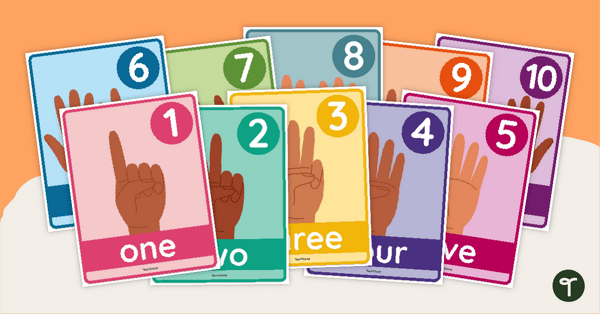
Finger Counting Poster Set
Display this set of finger counting posters to10 in the early years classroom.
- Plus Plan

Counting Objects Sort Numbers 1-5
Practise counting 1 – 5 objects with this colorful sorting activity.
- Plus Plan

Counting Watermelon Seeds Task Cards
Practise counting with this set of watermelon-themed counting task cards.
- Plus Plan
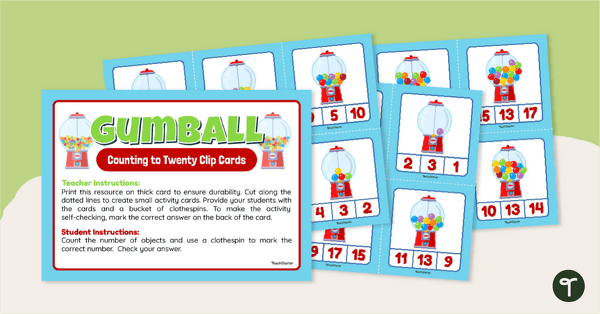
Gumball Counting Clip Cards
Practise counting gumballs and matching the numeral with what has been counted with this set of fun clip cards.
- Plus Plan
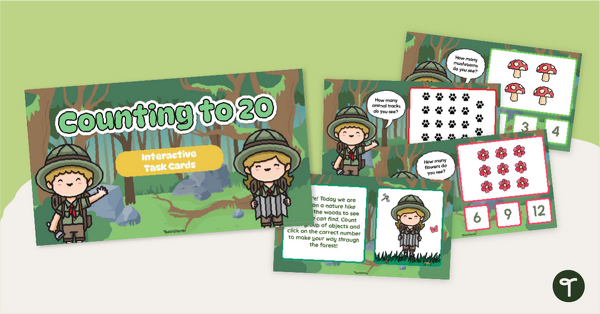
Counting to 20 Interactive Task Cards
Explore the woods with this nature hike and count the different groups of objects along the way!
- Plus Plan
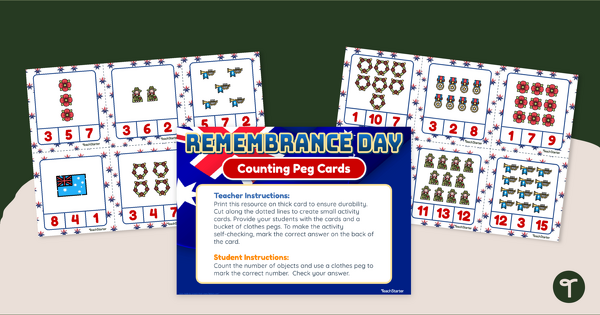
Remembrance Day Activity - Counting Peg Cards
Practise counting sets of objects with a group of 15 printable Remembrance Day peg cards.
- Free Plan
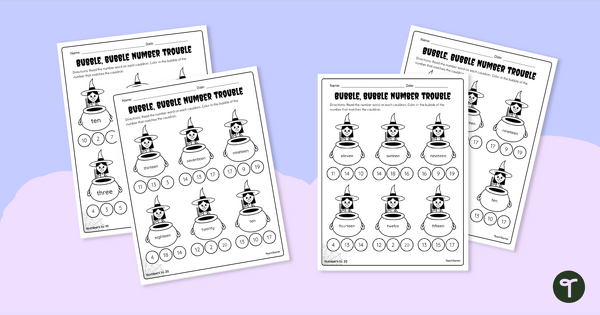
Halloween Number-Word Matching Worksheet
Match numbers and number words with a pack of Halloween printable maths worksheets for year 1.
- Number Sense Worksheets
- Number Sense Games
- Number Sense Posters
- Number Sense Templates
- Number Sense for Preschool/Kindergarten
- Number Sense for Foundation Year
- Number Sense for Year 1
- Number Sense for Year 2
- Number Sense for Year 3
- Number Sense for Year 4
- Number Sense for Year 5
- Number Sense for Year 6
- Number Sense for Year 7